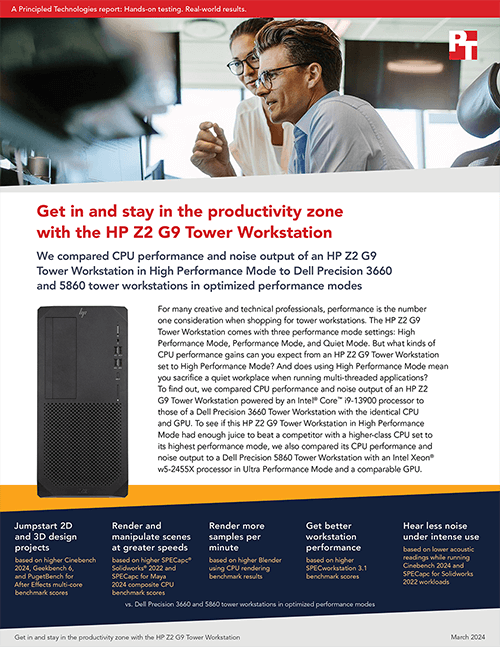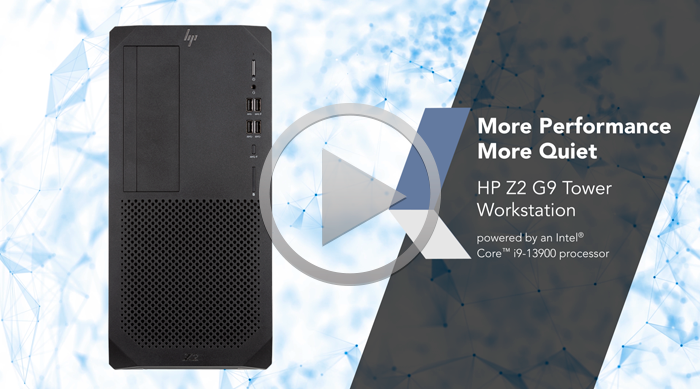
For professionals that thrive in the productivity zone, high-performance workstations can fuel the kinds of analytical, creative, and technical breakthroughs that open new pathways to success. High-powered systems can help keep innovation cycles rolling, but businesses in the market for new gear may find it difficult to know if systems wearing a performance label can handle the demands of the job. In addition, some systems can blaze through resource-intensive tasks, but only with focus-breaking tradeoffs like excess noise. Objective workstation comparison data can help companies choose hardware that is well-suited for promoting productivity—and not being distracting--in their workspace.
We used a variety of benchmark workloads to compare the CPU performance and noise output of three powerful workstations: an HP Z2 G9 Tower Workstation equipped with an Intel Core i9-13900 processor, a Dell Precision 3660 Tower Workstation equipped with an identical Intel Core i9-13900 processor, and a Dell Precision 5860 Tower Workstation equipped with an Intel Xeon w5-2455X processor. For our tests, we set each workstation to its highest available BIOS-based performance mode. To measure the individual noise output of the systems, we took acoustic readings while each system completed demanding 3D rendering workloads.
Across all our CPU-focused benchmark tests—which included tasks such as 3D design, engineering analysis, simulation, rendering, and video editing—the HP Z2 G9 running in High Performance Mode received higher performance scores than both Dell systems. The Z2 G9 was also quieter than both Dell workstations while running heavy loads. Our results show that the HP Z2 G9 Tower Workstation can provide creative and technical professionals with the productivity-boosting benefits of a powerful workstation without the added distraction of excess system noise.
To see more about our HP and Dell tower workstation comparison tests, check out the report below.
Principled Technologies is more than a name: Those two words power all we do. Our principles are our north star, determining the way we work with you, treat our staff, and run our business. And in every area, technologies drive our business, inspire us to innovate, and remind us that new approaches are always possible.







